산업용 공구와 내마모성 부품의 경우, 카바이드 플레이트 은 가장 다재다능하고 가치 있는 소재 중 하나입니다. 금속 가공, 목공, 중장비 제조 등 어떤 분야에 종사하든 카바이드 플레이트는 없어서는 안 될 필수 요소입니다. 그렇다면 초경판은 정확히 무엇이며 다양한 응용 분야에서 왜 그렇게 중요한 것일까요?
이 가이드에서는 카바이드 플레이트에 대해 알아야 할 모든 것을 살펴봅니다. 종류, 용도, 특성, 구성 등을 다룰 것입니다. 이 글이 끝나면 카바이드 플레이트에 대해 완전히 이해하고 필요에 맞는 카바이드 플레이트를 선택하는 방법을 알게 될 것입니다.
카바이드 플레이트는 무엇인가요?
텅스텐 카바이드 플레이트라고도 하는 카바이드 플레이트는 주로 텅스텐과 탄소 원자로 구성된 단단하고 내구성 있는 화합물인 텅스텐 카바이드로 만든 평평한 직사각형의 재료 조각입니다. 내마모성, 경도 및 극한 조건을 견딜 수 있는 능력으로 인해 다양한 산업 분야에 사용됩니다.
하지만 여기서 멈추지 마세요. 카바이드 플레이트는 단순히 튼튼한 것만이 아니라 매우 다재다능한 소재입니다. 버터 나이프로 다이아몬드를 자른다고 상상해 보세요. 불가능할 것 같죠? 카바이드 플레이트가 제공하는 내구성과 강도는 바로 이런 것입니다.
카바이드 플레이트가 중요한 이유는 무엇인가요?
카바이드 플레이트는 제조업계의 숨은 영웅입니다. 초경판의 중요성은 땀 한 방울 흘리지 않고 무거운 작업을 처리할 수 있는 능력에 있습니다. 단단한 재료 가공부터 기계의 마모 부품으로 사용되는 것까지 카바이드 플레이트는 많은 산업 공정의 중추입니다.
강력하고 신뢰할 수 있으며 오래 사용할 수 있도록 제작된 산업계의 일꾼이라고 생각하면 됩니다. 드릴링, 절삭, 금속 성형 등 어떤 작업을 하든 카바이드 플레이트는 정밀하고 효율적으로 작업을 수행할 수 있도록 도와줍니다.
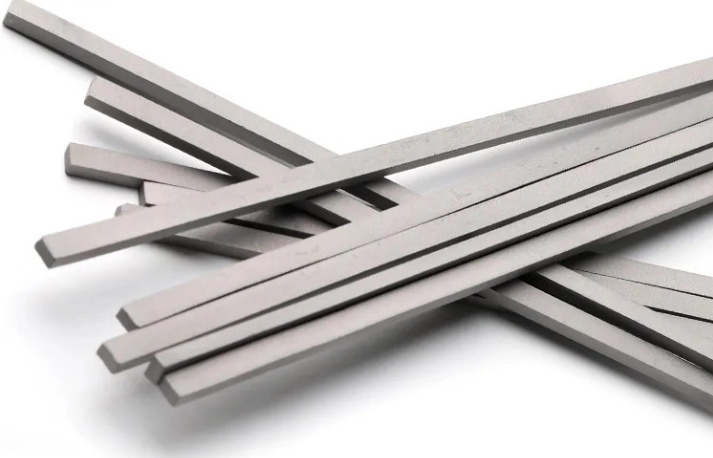
유형 카바이드 플레이트
모든 카바이드 플레이트가 똑같이 만들어지는 것은 아닙니다. 유형에 따라 용도가 다르므로 이러한 차이점을 이해하는 것이 필요에 맞는 제품을 선택하는 데 중요합니다.
소결 초경 플레이트
소결 초경판은 텅스텐 카바이드 분말을 주형에 압축한 다음 고온으로 가열하여 만듭니다. 이 과정에서 입자가 서로 결합되어 밀도가 높고 내구성이 뛰어난 플레이트가 만들어집니다. 이 플레이트는 높은 경도와 내마모성이 필요한 용도에 자주 사용됩니다.
초경 플레이트
그라운드 카바이드 플레이트는 연삭을 통해 추가 가공한 소결판입니다. 이 추가 단계는 플레이트의 표면 마감과 치수 정확도를 향상시켜 정밀 애플리케이션에 이상적입니다.
코팅 카바이드 플레이트
코팅 카바이드 플레이트는 특정 용도에서 성능을 향상시키기 위해 티타늄 카바이드 또는 알루미늄 산화물과 같은 다른 소재의 층으로 덮여 있습니다. 코팅은 내마모성을 개선하고 마찰을 줄이거나 부식에 대한 추가적인 보호 기능을 제공할 수 있습니다.
초경합금 플레이트
초경합금 플레이트는 초경 입자를 금속 바인더(일반적으로 코발트)와 결합하여 만든 복합 재료입니다. 이 조합은 경도와 인성의 균형이 잘 잡혀 있어 다양한 용도에 적합합니다.
마이크로 그레인 카바이드 플레이트
초미립자 카바이드 플레이트는 초미립자 카바이드 입자로 만들어집니다. 입자 크기가 작을수록 플레이트가 더 단단해지므로 날카로운 모서리와 오래 지속되는 성능이 필요한 절삭 공구에 이상적입니다.
콜드 헤딩 다이용 카바이드 플레이트
이 플레이트는 상온에서 금속을 성형할 때 발생하는 높은 압력과 응력을 견뎌야 하는 냉간 주조 금형에 사용하도록 특별히 설계되었습니다.
스탬핑 다이용 카바이드 플레이트
콜드 헤딩 다이와 마찬가지로 스탬핑 다이에는 높은 응력과 마모를 견딜 수 있는 소재가 필요합니다. 스탬핑 다이용 카바이드 플레이트는 뛰어난 내마모성과 치수 안정성을 제공합니다.
절삭 공구용 카바이드 플레이트
카바이드 플레이트는 톱날, 드릴, 밀링 커터와 같은 절삭 공구 제조에 일반적으로 사용됩니다. 경도와 내마모성이 뛰어나 거친 재료를 절단하는 데 이상적입니다.
마모 부품용 카바이드 플레이트
마모 부품은 베어링, 부싱, 라이너와 같이 지속적인 마찰과 마모가 발생하는 부품입니다. 카바이드 플레이트는 부품의 수명을 연장하고 유지보수 비용을 절감하기 위해 이러한 용도로 자주 사용됩니다.
맞춤형 카바이드 플레이트
특수한 용도의 경우 카바이드 플레이트는 특정 요구 사항을 충족하도록 크기, 모양 및 구성 측면에서 맞춤화할 수 있습니다. 커스터마이징을 통해 플레이트가 의도한 용도에서 최적의 성능을 발휘하도록 보장합니다.
카바이드 플레이트의 응용 분야
카바이드 플레이트는 내구성, 경도 및 내마모성 덕분에 다양한 산업 분야에서 사용됩니다. 여기에서는 가장 일반적인 응용 분야 몇 가지를 살펴보겠습니다.
| 애플리케이션 | 설명 |
|---|---|
| 금속 절단 | 초경 플레이트는 금속 가공용 절삭 공구에 사용됩니다. |
| 목공 | 목공용 톱날과 라우터 비트에 사용됩니다. |
| 마이닝 | 카바이드 플레이트는 암석과 광석을 절단하는 채굴 도구에 사용됩니다. |
| 건설 | 건축 자재를 절단하고 성형하는 건설 장비에 사용됩니다. |
| 항공우주 | 카바이드 플레이트는 항공우주 부품 제조에 사용됩니다. |
| 자동차 | 높은 내마모성이 요구되는 자동차 부품 생산에 사용됩니다. |
| 석유 및 가스 | 초경 플레이트는 석유 및 가스 산업의 시추 도구 및 장비에 사용됩니다. |
| 농업 | 흙을 자르고 경작하는 농기계에 사용됩니다. |
| 의료 기기 | 카바이드 플레이트는 수술 도구 및 의료 기기에 사용됩니다. |
| 재활용 | 재료를 절단하고 파쇄하는 재활용 기계에 사용됩니다. |
머티리얼 속성 카바이드 플레이트
카바이드 플레이트는 뛰어난 재료 특성으로 잘 알려져 있어 다양한 응용 분야에 적합합니다. 다음은 몇 가지 주요 특성을 살펴봅니다:
| 속성 | 설명 |
|---|---|
| 경도 | 카바이드 플레이트는 보통 85~95 HRA로 매우 단단합니다. |
| 내마모성 | 마모가 심한 환경에서도 뛰어난 내마모성을 제공합니다. |
| 인성 | 카바이드 플레이트는 경도가 높지만 인성이 좋고 충격에도 견딜 수 있습니다. |
| 내식성 | 일부 카바이드 플레이트는 부식에 강해 열악한 환경에서 사용하기에 적합합니다. |
| 열 안정성 | 카바이드 플레이트는 특성을 잃지 않고 고온을 견딜 수 있습니다. |
| 전기 전도성 | 카바이드 플레이트는 전기 전도성이 우수하여 특정 애플리케이션에서 유리할 수 있습니다. |
| 자기 속성 | 일부 카바이드 플레이트는 자기 특성을 나타내므로 특정 애플리케이션에 유용할 수 있습니다. |

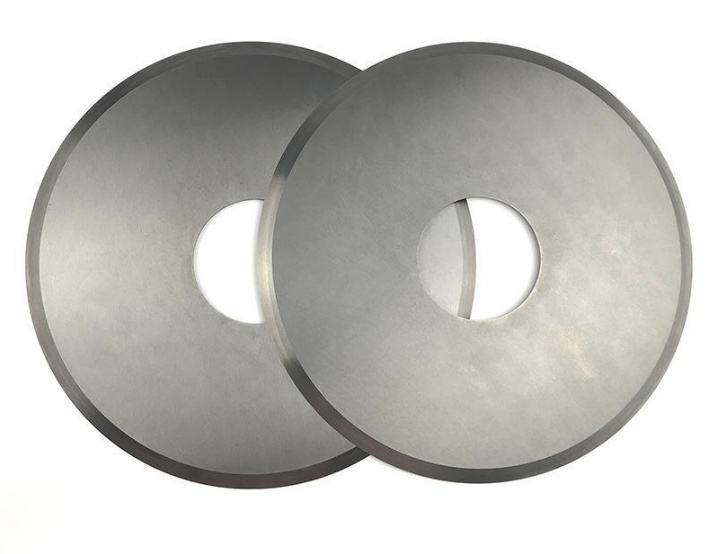
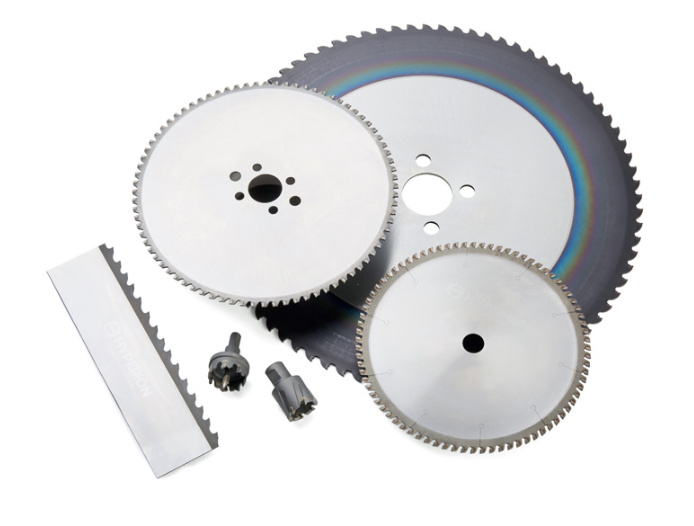
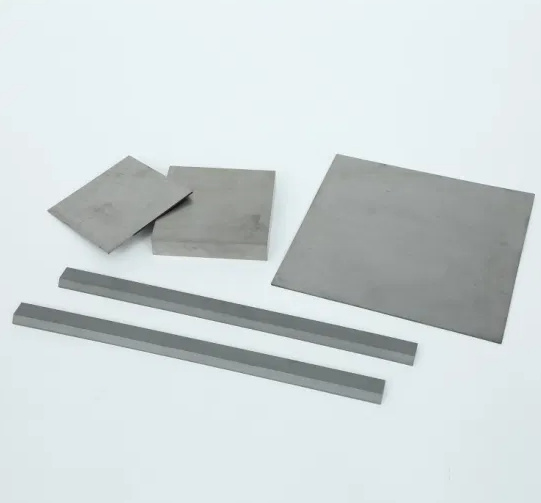
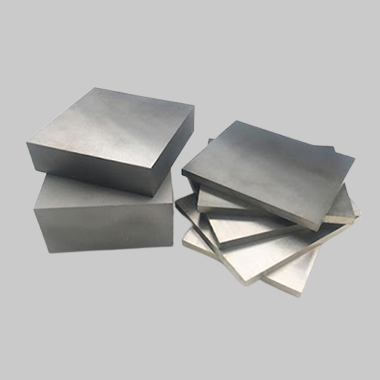
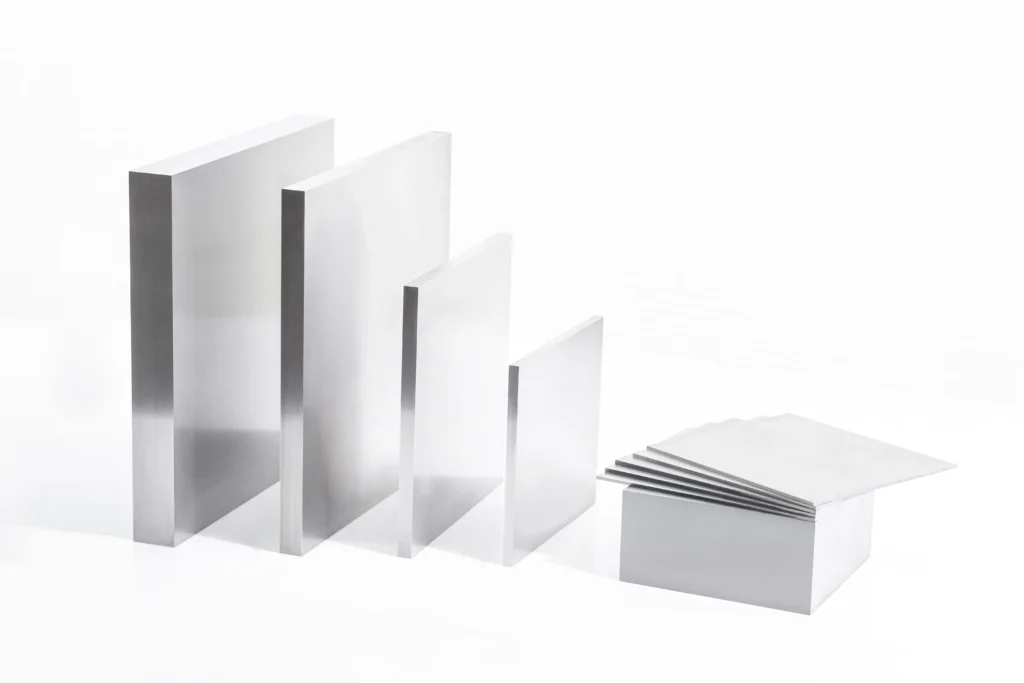
구성 및 특성
카바이드 플레이트는 주로 텅스텐 카바이드로 구성되며, 금속 바인더(일반적으로 코발트)와 결합됩니다. 정확한 구성은 원하는 플레이트의 특성에 따라 달라질 수 있습니다.
| 구성 요소 | 역할 |
|---|---|
| 텅스텐 카바이드 | 경도와 내마모성을 제공합니다. |
| 코발트 바인더 | 카바이드 입자를 서로 결합하여 인성을 제공합니다. |
| 티타늄 카바이드 | 산화 및 고온 마모에 대한 내성을 향상시키기 위해 첨가하기도 합니다. |
| 탄탈 탄화물 | 열 충격에 대한 내성을 향상시키기 위해 추가되었습니다. |
경도, 강도 및 내마모성
카바이드 플레이트의 성능은 경도, 강도, 내마모성을 기준으로 평가하는 경우가 많습니다. 이러한 요소는 특정 용도에 대한 플레이트의 적합성을 결정하는 데 매우 중요합니다.
| 속성 | 설명 |
|---|---|
| 경도(HRA) | 일반적으로 85~95 HRA 범위입니다. 경도가 높을수록 내마모성은 좋지만 인성은 낮습니다. |
| 압축 강도 | 카바이드 플레이트가 고압을 견딜 수 있도록 4000MPa를 초과할 수 있습니다. |
| 내마모성 | 표준 마모 테스트에서 부피 손실로 측정되며, 카바이드 플레이트는 일반적으로 마모율이 매우 낮습니다. |
| 골절 인성 | 플레이트의 균열 전파에 대한 저항력을 나타내며, 값이 클수록 균열에 대한 저항력이 우수합니다. |
사양, 크기, 모양 및 표준
카바이드 플레이트는 용도에 따라 다양한 크기, 모양 및 표준으로 제공됩니다. 다음은 일반적인 사양에 대한 분석입니다:
| 사양 | 설명 |
|---|---|
| 표준 크기 | 일반적인 크기에는 100x100mm, 150x150mm, 200x200mm가 있습니다. |
| 두께 | 일반적으로 애플리케이션에 따라 1mm에서 50mm까지 다양합니다. |
| 도형 | 직사각형, 정사각형 및 사용자 지정 모양을 사용할 수 있습니다. |
| 표준 | 플레이트는 ISO, ASTM, DIN과 같은 산업 표준에 따라 제조되는 경우가 많습니다. |
| 표면 마감 | 광택 및 비광택 마감으로 제공됩니다. |
| 허용 오차 | 치수 허용 오차는 ±0.01mm까지 엄격할 수 있습니다. |
| 엣지 준비 | 애플리케이션에 따라 날카로운 모서리, 모따기 또는 둥근 모서리를 사용할 수 있습니다. |
공급업체 및 가격 세부 정보
카바이드 플레이트 시장은 방대하며 수많은 공급업체가 다양한 제품을 제공하고 있습니다. 다음은
몇 가지 주요 공급업체와 가격을 살펴보세요:
| 공급업체 | 위치 | 제품 범위 | 가격 범위(kg당) |
|---|---|---|---|
| 케나메탈 | 미국 | 연마, 코팅 및 맞춤형 플레이트 | $100 – $250 |
| 샌드빅 | 스웨덴 | 소결, 연마 및 코팅 플레이트 | $120 – $280 |
| 주저우 초경합금 | 중국 | 소결 및 연마 플레이트 | $80 – $200 |
| 미쓰비시 머티리얼즈 | 일본 | 고성능 플레이트 | $130 – $300 |
| 스미토모 전기 | 일본 | 코팅 및 비코팅 플레이트 | $110 – $270 |
| 텅스텐 카바이드 인도 | 인도 | 맞춤형 및 표준 플레이트 | $90 – $220 |
| 세라티지트 | 룩셈부르크 | 마모 부품 및 절삭 공구 플레이트 | $150 – $320 |
| 하이페리온 머티리얼 | 미국 | 정밀 연마 플레이트 | $140 – $310 |
| Kyocera | 일본 | 고인성 플레이트 | $125 – $290 |
| H.C. 스탁 텅스텐 | 독일 | 특수 및 맞춤형 플레이트 | $130 – $300 |
올바른 카바이드 플레이트 선택 방법
다양한 옵션을 고려할 때 올바른 카바이드 플레이트를 선택하는 것은 어려울 수 있습니다. 다음은 고려해야 할 몇 가지 요소입니다:
| 팩터 | 고려 사항 |
|---|---|
| 애플리케이션 | 구체적인 사용 사례(절단, 성형, 마모 부품 등)를 결정합니다. |
| 머티리얼 속성 | 용도에 따라 경도, 인성, 내마모성을 고려하세요. |
| 코팅 | 추가적인 내마모성 또는 부식 방지를 위해 코팅 플레이트가 필요한지 여부를 결정합니다. |
| 크기 및 모양 | 플레이트가 애플리케이션의 치수 요구 사항을 충족하는지 확인합니다. |
| 공급업체 평판 | 품질과 신뢰성에 대한 공급업체의 평판을 고려하세요. |
| 비용 | 비용과 성능 요구 사항의 균형을 맞추세요. |
| 사용자 지정 요구 사항 | 특정 요구 사항을 충족하기 위해 맞춤 플레이트가 필요한지 결정합니다. |
| 환경 조건 | 작동 환경(온도, 부식 등)을 고려하세요. |
장점과 한계 비교
카바이드 플레이트는 몇 가지 장점을 제공하지만 몇 가지 한계도 있습니다. 다음은 비교입니다:
| 이점 | 제한 사항 |
|---|---|
| 높은 내마모성 | 다른 재료보다 비쌀 수 있습니다. |
| 탁월한 경도 | 경도가 높으면 일부 애플리케이션에서 취성이 발생할 수 있습니다. |
| 우수한 열 안정성 | 강철과 같은 다른 소재에 비해 연성이 제한적입니다. |
| 긴 서비스 수명 | 가공 및 취급을 위한 특수 장비가 필요합니다. |
| 애플리케이션의 다양성 | 일부 대안보다 무거워 특정 애플리케이션에서 문제가 될 수 있습니다. |
자주 묻는 질문
Q: 카바이드 플레이트는 무엇으로 만들어지나요?
A: 카바이드 플레이트는 주로 텅스텐 카바이드로 만들어지며, 금속 바인더(일반적으로 코발트)와 결합됩니다. 정확한 구성은 원하는 플레이트의 특성에 따라 달라질 수 있습니다.
Q: 카바이드 플레이트의 주요 용도는 무엇인가요?
A: 카바이드 플레이트는 금속 절삭, 목공, 광업, 건설, 항공우주, 자동차, 의료 기기 등 다양한 분야에 사용됩니다. 경도와 내마모성이 뛰어나 이러한 까다로운 작업에 이상적입니다.
Q: 내 애플리케이션에 적합한 카바이드 플레이트는 어떻게 선택하나요?
A: 올바른 카바이드 플레이트를 선택하려면 특정 용도, 재료 특성, 코팅, 크기, 모양, 공급업체 평판, 비용 및 환경 조건 등의 요소를 고려해야 합니다.
Q: 카바이드 플레이트에는 여러 종류가 있나요?
A: 예, 소결, 연마, 코팅, 시멘트, 초경합금 등 여러 종류의 초경 플레이트가 있으며, 각 초경 플레이트는 다양한 용도에 적합한 고유한 특성을 가지고 있습니다.
Q: 카바이드 플레이트의 일반적인 경도는 얼마인가요?
A: 카바이드 플레이트의 경도는 일반적으로 특정 유형과 구성에 따라 85~95 HRA 범위입니다.
Q: 카바이드 플레이트를 맞춤 제작할 수 있나요?
A: 예, 카바이드 플레이트는 특정 요구 사항을 충족하기 위해 크기, 모양, 구성 및 기타 속성 측면에서 사용자 지정할 수 있습니다.
Q: 카바이드 플레이트의 가격은 얼마인가요?
A: 카바이드 플레이트의 가격은 유형, 크기 및 공급업체에 따라 다르지만 일반적으로 킬로그램당 $80에서 $320까지 다양합니다.
결론
카바이드 플레이트 은 절삭 공구부터 마모 부품에 이르기까지 광범위한 산업 분야에서 중요한 구성 요소입니다. 경도, 인성 및 내마모성의 독특한 조합으로 다른 소재가 금방 고장날 수 있는 환경에서 없어서는 안 될 필수 요소입니다. 다양한 유형의 카바이드 플레이트와 그 특성, 올바른 선택 방법을 이해하면 애플리케이션에서 최적의 성능과 수명을 보장할 수 있습니다.
금속 가공, 목재 절단, 항공우주 산업 부품 제조 등 어떤 분야에서든 카바이드 플레이트는 성공의 열쇠입니다. 올바른 지식과 신중한 선택으로 이 놀라운 소재의 힘을 활용하여 프로젝트에서 우수한 결과를 얻을 수 있습니다.



